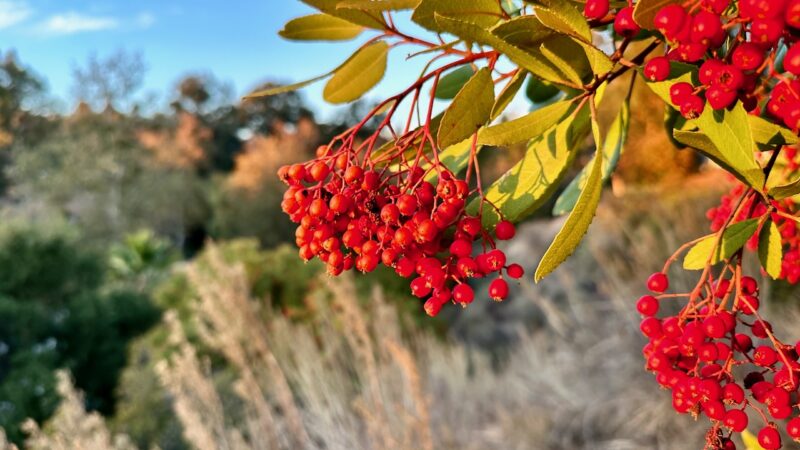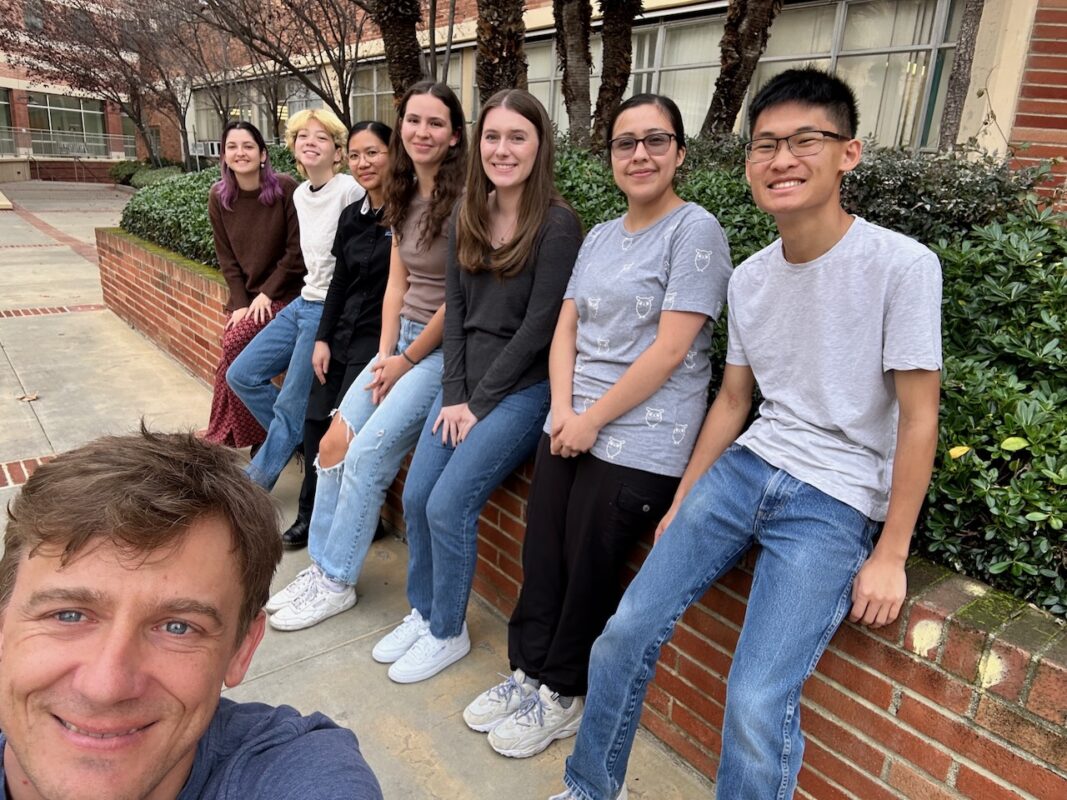
Student Team: Bec Chenowith, Kolby Emison, Jacqueline Gonzalez Hurtado, Isaac Law, Angela Sarunchartinonth, Sarah Schmitt, and Emma Strassner
Client: UCLA Institute of the Environment and Sustainability
Advisor: Dr. Andy Kleinhesselink
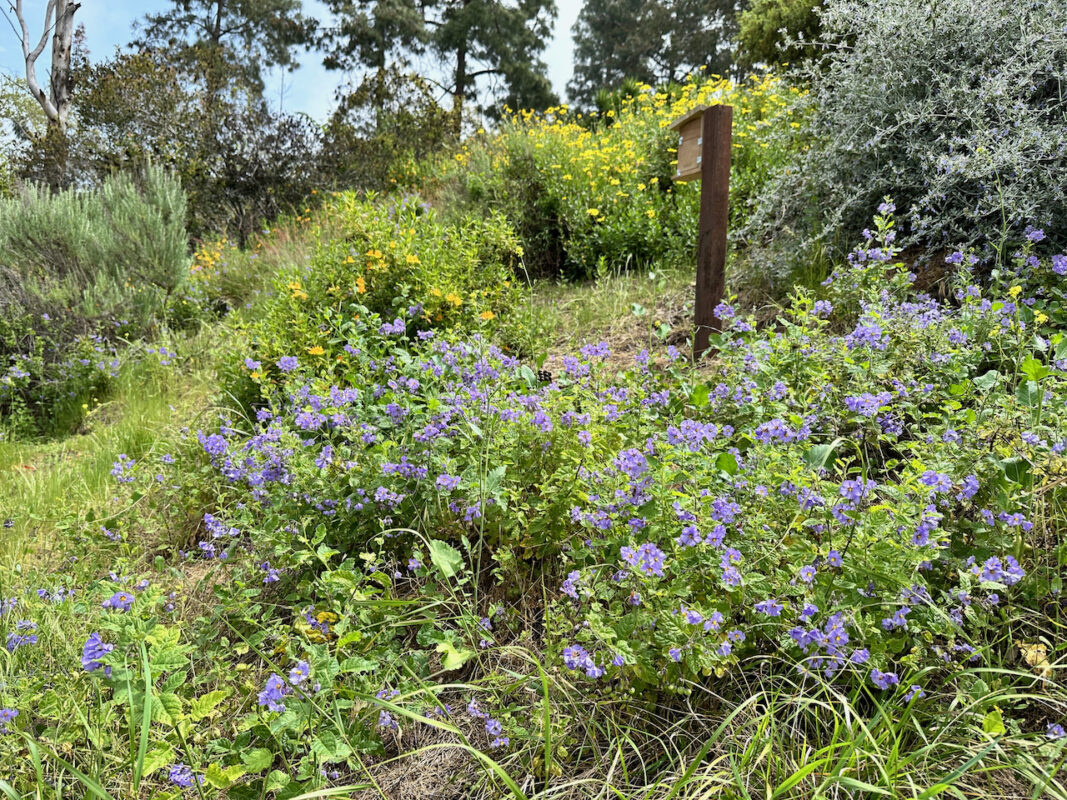
How should we restore Sage Hill?
As the largest natural area left on the UCLA campus, Sage Hill is a unique setting for undergraduate education and research, and it offers a place for students to spend time in nature, a practice that promotes wellbeing and mental health. Despite its small acreage, Sage Hill supports hundreds of native plant, mammal, insect, and avian species. Nevertheless, many parts of Sage Hill are recovering from disturbance and are dominated by non-native exotic plant species. In order to help Sage Hill reach its full potential as a reservoir of native biodiversity, we are restoring its native vegetation and reintroducing native species that have been lost.
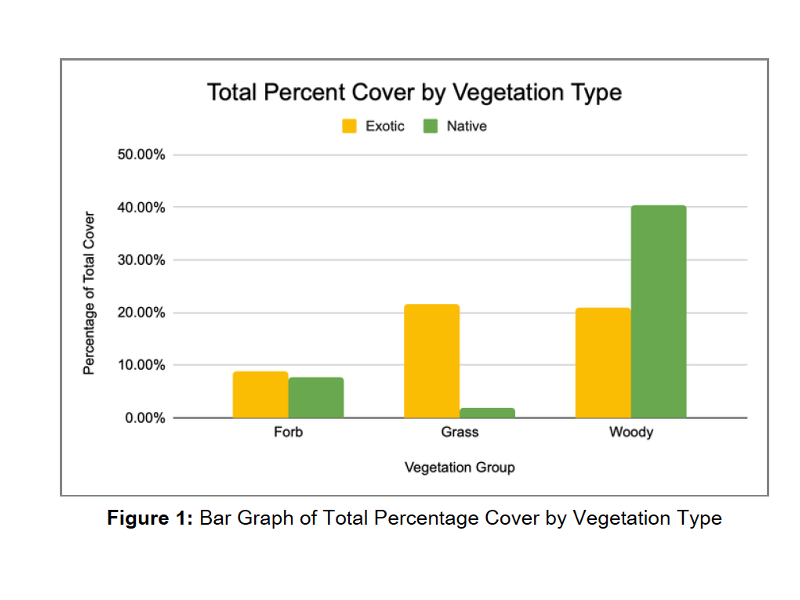
Seven students in the 2023-24 IoES Senior Practicum took an important step towards this goal by developing a restoration and monitoring plan for Sage Hill. First, they took stock of the current vegetation and soil conditions at Sage Hill using manual line-intercept monitoring, soil analysis, and high resolution drone imagery. These data paint our most detailed picture yet of the current state of Sage Hill. Vegetation data will be collected in the same way each spring which will help us evaluate restoration success over time. This is a key principle in effective ecological restoration programs worldwide (Gann et al. 2020). Previous IoES Practicum teams have also focused on Sage Hill, including reports outlining a vision for Sage Hill as an educational resource, documenting its use by students and classes, and a strategy for controlling non-native vegetation.
But how exactly should we restore Sage Hill’s native vegetation? Which native species should be replanted and where? To answer these questions, the practicum team used GIS to partition Sage Hill into 19 distinct microhabitats and assigned each of these a target for vegetation restoration. The team decided on appropriate vegetation types for each area by consulting vegetation data and atlases for the Santa Monica Mountains published by the National Park Service and the California Native Plant Society (Keeler-Wolf and Evans 2006; Mendelsohn et al. 2023).
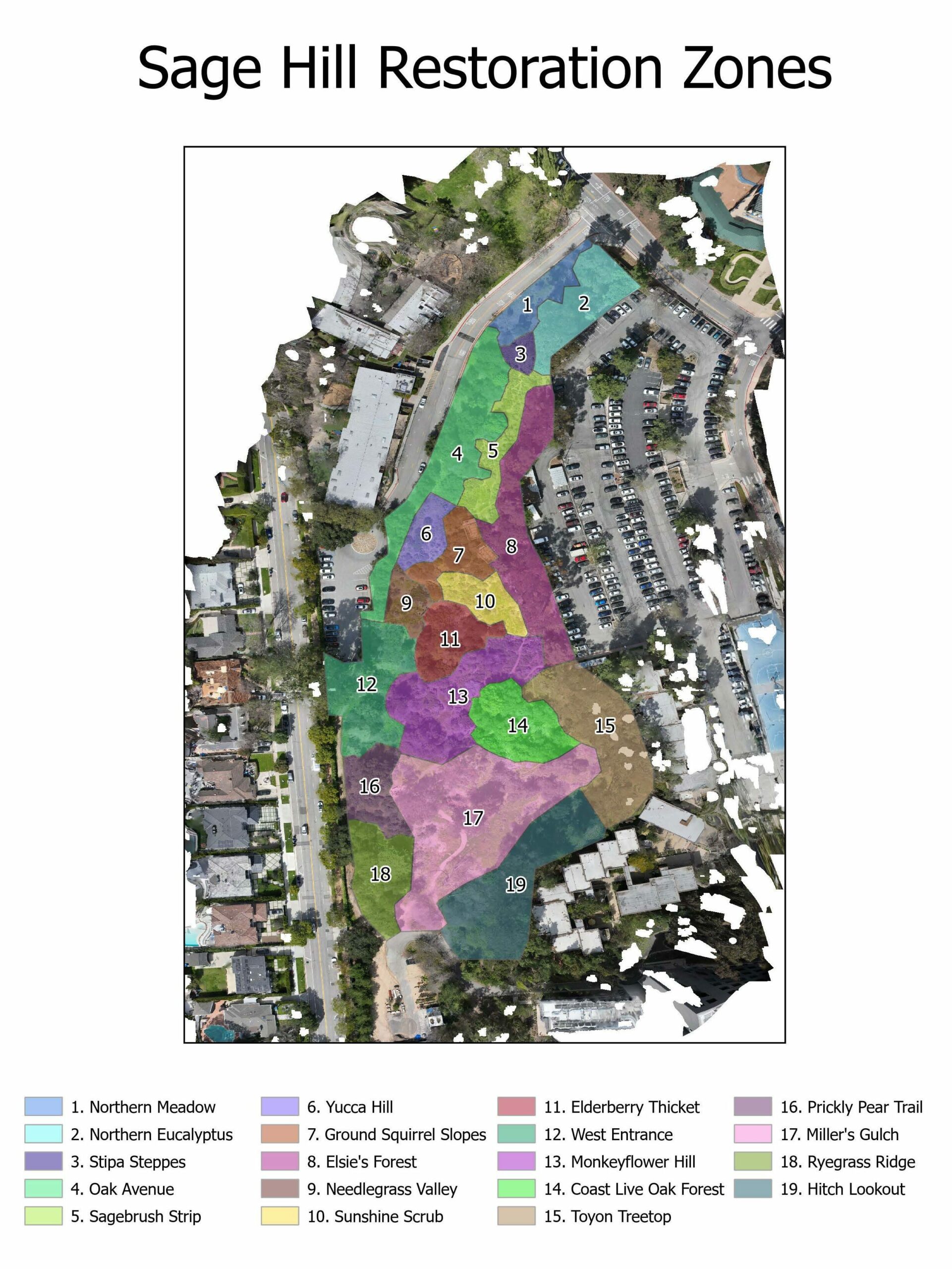
In addition to the vegetation data, students compiled a set of historical and contemporary images that track changes in Sage Hill’s vegetation from the 1960’s to today. These photos show how the site’s environment and vegetation has changed starting with the construction of the campus in the 1920’s to today. Repeat photography in the future from the same locations will help us track restoration progress over time.
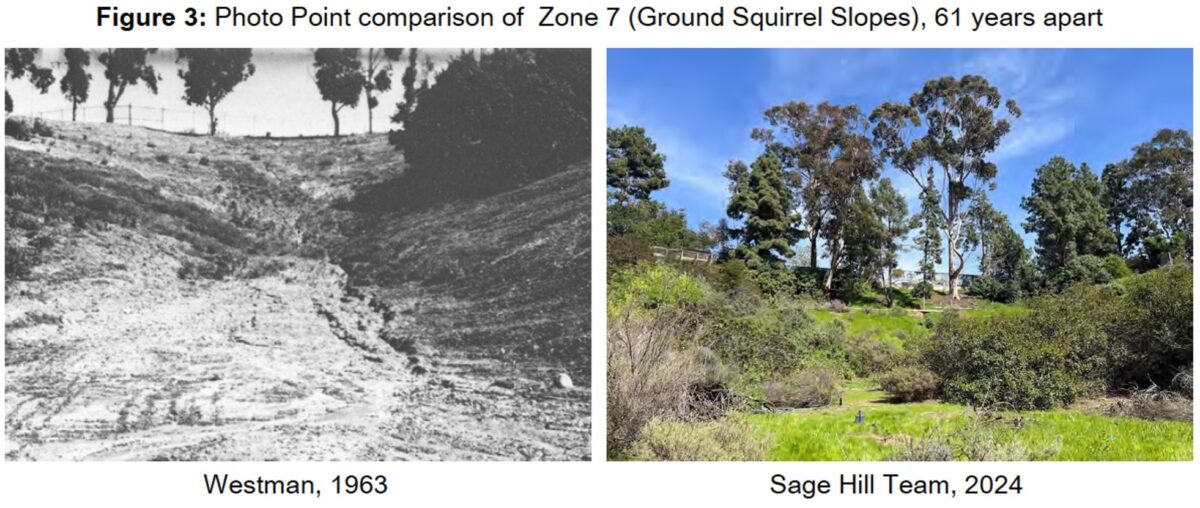
The practicum team, packaged more photos, along with vegetation data, and restoration maps into an Arc Story Map available here: https://arcg.is/1H8fvb.
Sage Hill at UCLA acknowledges the Gabrielino/Tongva peoples as the traditional land caretakers of Tovaangar (the Los Angeles basin and So. Channel Islands). As a land grant institution, we pay our respects to the Honuukvetam (Ancestors), ‘Ahiihirom (Elders) and ‘Eyoohiinkem (our relatives/relations) past, present and emerging.
Bibliography
Gann, G. D., T. McDonald, B. Walder, J. Aronson, C. R. Nelson, J. Jonson, J. G. Hallett, C. Eisenberg, M. R. Guariguata, J. Liu, and others. 2019. International principles and standards for the practice of ecological restoration. Restoration ecology 27:S1–S46. https://onlinelibrary.wiley.com/doi/full/10.1111/rec.13035.
Mendelsohn, M., J. Tiszler, and T. Sagar. 2023. Vegetation monitoring in the Santa Monica Mountains and Simi Hills region: 2014 – 2020 annual report. National Park Service. https://doi.org/10.36967/2300992.
Sawyer, J. O., T. Keeler-Wolf, and J. M. Evans. 2006. A Manual of California Vegetation Online. Second Edition. California Native Plant Society, Sacramento, CA. http://vegetation.cnps.org/.

